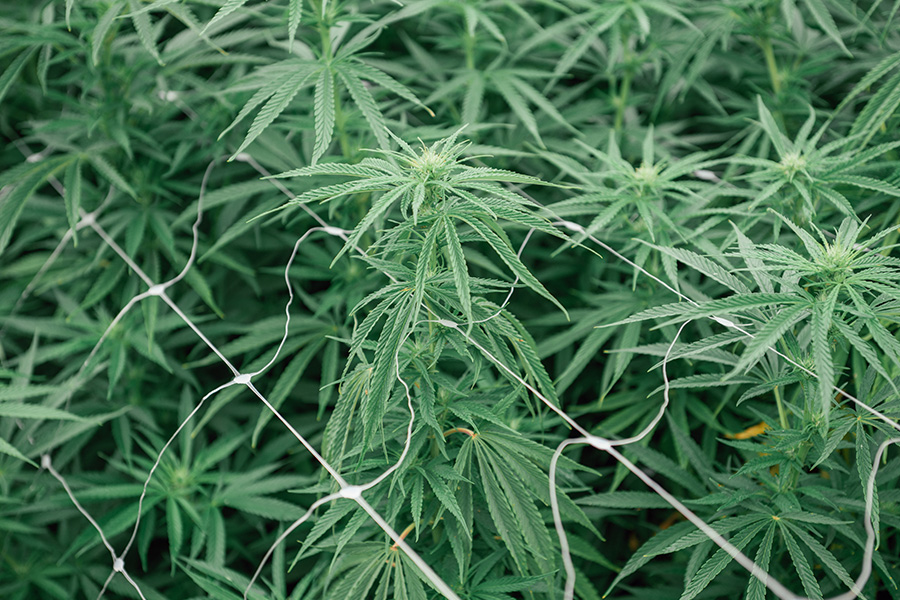In cannabis cultivation, the use of a plant trellis system serves two primary purposes: training branches to maximize sunlight utilization and providing necessary support to prevent branch breakage. Trellising techniques enable growers to optimize yields, improve airflow, and enhance overall plant health. In this blog post, we will explore the two main methods of trellising for cannabis cultivation: corralling and netting, discussing their benefits, considerations, and alternative approaches.
Corralling: Enhancing Sunlight Utilization and Branch Support
Corralling is a trellising method that involves installing posts at even intervals throughout the bed and securing high tensile wire or trellis rope at multiple vertical levels around the plant perimeter. The purpose of corralling is twofold. First, it trains branches away from each other to enhance light penetration and airflow. Second, it provides support to prevent heavy buds from snapping branches. The spacing of posts depends on factors such as plant height and the local climate’s prevalent wind and rain conditions. While corralling offers efficient support, it does not provide the systematic branch training benefits seen with other methods.
Netting: Harnessing Horizontal Space and Branch Training
Netting involves stretching a horizontal plastic mesh across evenly spaced t-posts defining the bed’s outer edge. The netting is attached to posts and carefully lowered into the canopy, with branches trained into the mesh to maximize horizontal surface area coverage. This method ensures better light distribution, improved airflow, and optimal branch positioning. However, netting can be labor-intensive and time-consuming, especially during installation and harvest. Its use of single-use plastic presents environmental concerns, further adding to the logistical challenges associated with the technique.
Exploring Alternatives and Planning Ahead
While trellises presents numerous benefits for cannabis cultivation, some growers are exploring alternative strategies to simplify their cultivation practices. Selecting genetics with thicker stalks or opting for autoflower cannabis, which naturally stays shorter, allows growers to bypass the need for trellising. Late-season planting of clones to restrict plant height and dense planting with an acceptance of branch loss are also techniques employed by certain cultivators. Each approach has its own considerations, and growers should carefully evaluate which method aligns best with their specific needs and goals.
Trellising is vital for successful cannabis cultivation. It offers benefits like better sunlight use, improved airflow, and support for branches. Corralling provides efficient support and netting helps with branch training and maximizes horizontal space. However, both methods come with logistical and environmental challenges. Growers should also explore alternatives, such as genetic selection, autoflower cultivars, late-season planting, or dense planting. These strategies can simplify cultivation practices while achieving desired results. By considering their crops’ unique needs and focusing on sustainability, growers can effectively optimize their cannabis yields.
